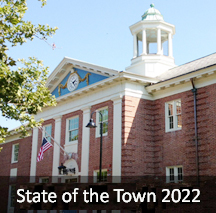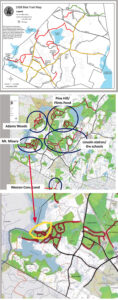 There will be a two-night State of the Town meeting via Zoom in mid-November with an overarching theme: “What should Lincoln be like in 2050?”
There will be a two-night State of the Town meeting via Zoom in mid-November with an overarching theme: “What should Lincoln be like in 2050?”
“Lincoln’s boards and committees are focused on work that will have long-term implications for and impacts on our town. There are conversations about housing, education, human services, multi-modal transportation, diversity and equity, land use, and climate change (to name but a few),” the Select Board said in their most recent newsletter. “Many topics are interrelated and require us to think about our values, envision the future, and weigh (sometimes difficult) tradeoffs. We need your ideas, insights, questions, and dreams to guide our work as we draft the plans, policy proposals, and budgets that you will vote on at subsequent Town Meetings.”
Residents are invited to read and respond to a “Letter to Our Grandchildren” by the 1971 Planning Board excerpted in the Select Board newsletter that outlined issues of the day including zoning, housing prices, roadside paths, and even trash (“We wonder whether you will have solved the problem of solid waste? Maybe our best hope is that you will be wise enough to produce less of it…”).
Discussion questions for today include:
- How would you describe Lincoln in 2022? (housing, transportation, human services, education, diversity & equity, town governance, land use practices, energy consumption, etc.)
- What is your vision for 2050?
- What would you include in a new “letter to our grandchildren”? What actions do we need to take to fulfill your vision? What are your top priorities?
Send a few words, a few paragraphs, photos, poetry or whatever conveys your ideas using this form. The deadline is Tuesday, Nov. 1.
The State of the Town schedule and topics of discussion are listed below. The links can also be found on the town’s SOTT web page.
Monday, Nov. 14 at 7 p.m. — Night 1 (Zoom event — register here)
- Community Center Building Committee
- Council on Aging & Human Services
- Inclusion, Diversity, Equity, & Anti-Racism (IDEA) Committee
Tuesday, Nov. 15 at 7 p.m. — Night 2 (Zoom event — register here)
- Planning Board
- Conservation, Rural Land Foundation/Lincoln Land Conservation Trust
- Green Energy/Climate Action
- Bicycle & Pedestrian Advisory Committee


